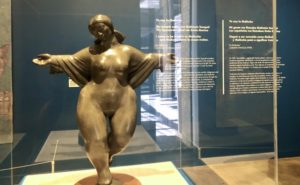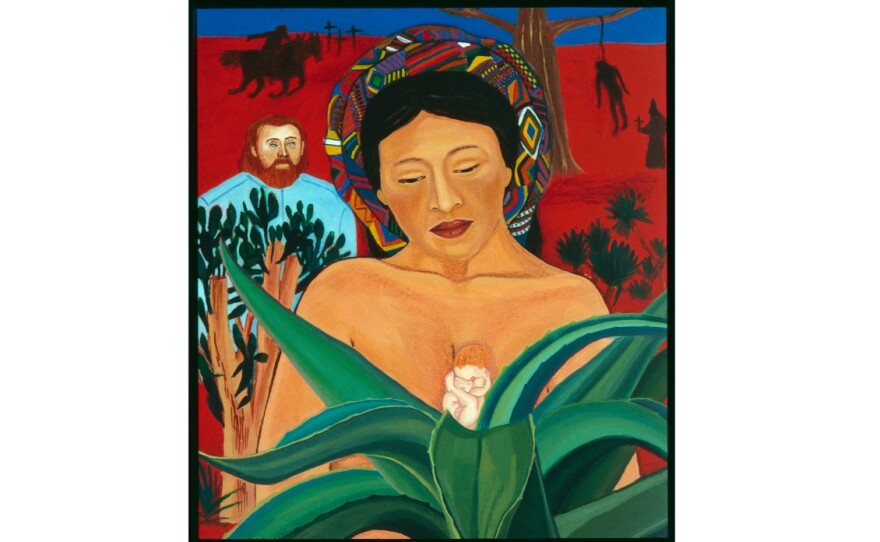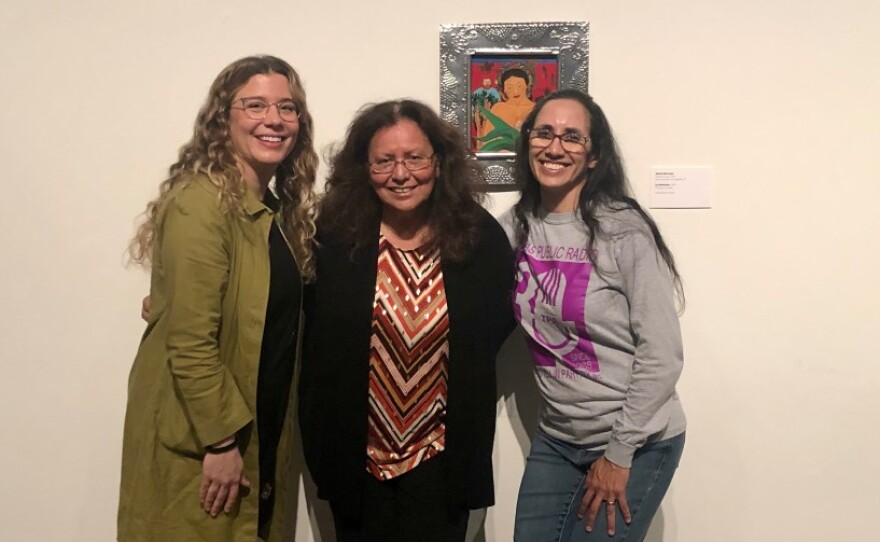From Texas Public Radio:
After the Spanish conquistadores arrived in Mesoamerica during the 16th century, they toppled the Aztec Empire of Tenochtitlan with the help of a young indigenous girl.
La Malinche — also known throughout history as Doña Marina, Malintzin or Malinalli — was among a group of enslaved women who were given to the Spaniards when they first arrived.
Skilled at learning language and dialects, she became the translator and cultural interpreter for Hernán Cortés.

Armando Baeza (Mexican American, born 1924). “La Marina/La Malinche,” 2013. Bronze. From the personal collection of Luz and Jeff Lough.
Marian Navarro / Texas Public Radio
Five hundred years later, critics argue that Malinche’s role as translator directly led to the conquest of indigenous peoples in Mesoamerica.
Mexican poet Octavio Paz’s essay “The Sons of La Malinche” explicitly labeled her as a woman who betrayed her people and her nation.
A new exhibit at the San Antonio Museum of Art (SAMA) aims to revisit Malinche’s legacy and her artistic portrayals throughout history.
The “Traitor, Survivor, Icon: The Legacy of La Malinche” exhibit is separated into five sections, highlighting Malinche’s impact on indigeneity, national identity, and female empowerment.













